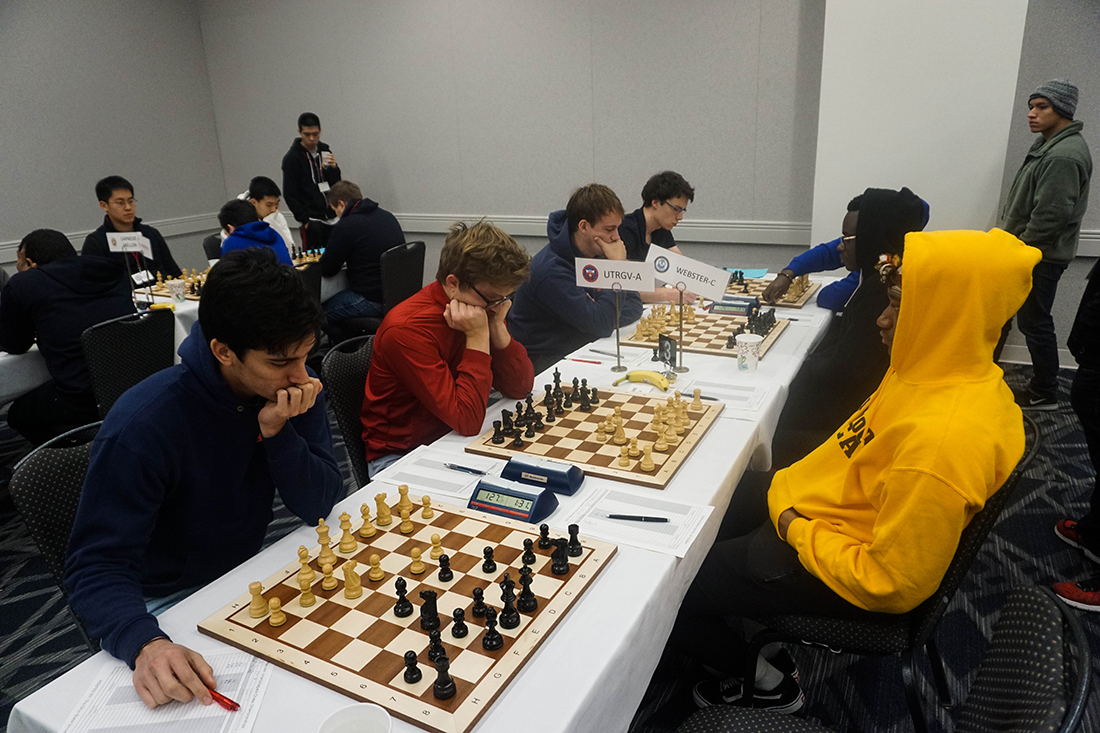
Chess has been around since the sixth century and throughout time, society has made the connection between the game and advanced thinking skills.
Knowing this, The Rider will work with Grandmaster and UTRGV Chess Coach Bartek Macieja, as well as the school’s chess team, to begin a weekly feature this semester, teaching our readers how to play chess.
“It teaches you some discipline,” Macieja said. “You have to play a move but you have some amount of time. … You have to make the best move. … You don’t do it, you lose the game. It’s like with life … when you prepare for exams, you also have some limited number of days, hours and then it’s gone.”
Chess is believed to have originated in Asia or Persia and was a “war game” that taught soldiers some basic rules of war.
The goal was to capture the opponent’s king. The war was over once the king was captured, similar to today’s game of chess.
A chess board consists of 64 squares, 32 light and 32 dark. The light square on the first row must be on the right-hand side when facing the board. In chess, the white pieces always make the first move.
Macieja said to begin to learn and understand chess, one must first understand the basics, which would be how each piece moves.
There are six different pieces; each side consists of eight pawns placed on the second row, two rooks on the corners, two knights next to the rooks, two bishops next to the knights, one queen that goes on its color and one king on the first row.
The pawns move forward one square at a time throughout the game, unless it is their first move during which they can move two squares forward. They capture enemy pieces by moving one square forward diagonally.
The rooks move horizontally or vertically through any number of empty spaces. The bishops can only move diagonally through empty squares.
Knights are a little tricky as they move two squares horizontally and one vertically, or two squares vertically and one square horizontally. It may be easier to remember it as an “L” shape in any direction.
The queen is a combination of a rook and a bishop as it may move diagonally, vertically or horizontally through any number of empty spaces.
Lastly, there is the king, which can move one square in any direction it pleases.
A similarity in all the pieces is that to capture an enemy’s piece, your piece must take its place.
UTRGV in Final Four
The university’s chess team placed fourth in the 2017 Pan-American Intercollegiate Chess Championships and will advance to the President’s Cup, also known as the Final Four of College Chess. The tournament is set to take place the first week of April in New York.
UTRGV will be represented by Grandmasters Kamil Dragun, Andrey Stukopin, Vladimir Belous, Hovhannes Gabuzyan and Carlos Hevia Alejano.
The other schools advancing to the Final Four are Webster University, St. Louis University and Texas Tech University.
“With our motivated team and our [eagerness] to succeed there, I really believe we have a very good chance to surprise other teams and claim the trophy,” Macieja said.





